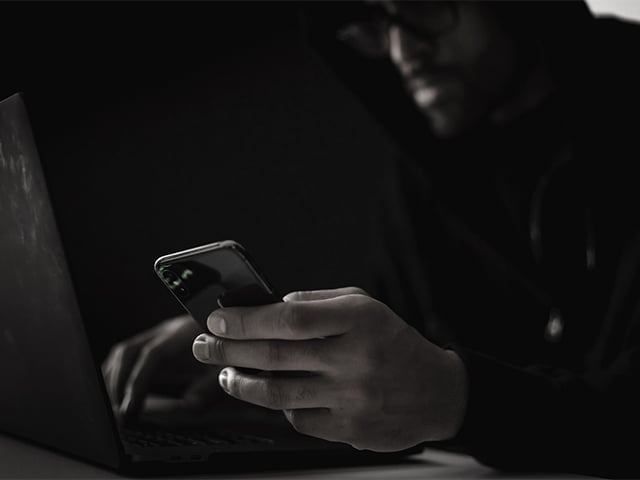The non-fungible token market is growing at a CAGR of 35.27 percent, according to Technavio, a global research firm. Unfortunately, the instances of fraud and money laundering related to NFTs are also growing.
In March, Axie Infinity, an NFT gaming company, was the victim of a $600 million hack. In April, $2.8 million of NFTs were stolen from the Bored Ape Yacht Club's Instagram account. A Privacy HQ survey found that about half of all NFT marketplace users had lost access to their NFTs at least once. Half of them failed to recover their assets.
What is NFT Money Laundering?
Money laundering occurs when individuals or entities use legitimate businesses or financial institutions to conceal the origins of money they obtained illegally. NFTs can be particularly attractive for criminals who wish to launder money because of their inherent anonymity and arbitrary assignment of value. No mechanism exists to prevent criminals from creating multiple accounts to make the discovery of the laundering more tricky.
Criminals could self-launder money by buying an NFT and passing it to themselves through different digital accounts to create a sales record and then sell it to another buyer. Or, they could use stolen credit cards to buy a rare NFT and then resell it.
What Types of NFT Scams Exist?
NFT marketplaces can also be the site of scams aside from money laundering. A pump and dump scheme is one in which sellers buy up the NFTs themselves to falsely pump up the value so that investors believe the NFT is in high demand. These investors then overpay to acquire the NFT.
Another scam is minting NFTs from existing artwork copyrighted by another artist, then selling it as the original. A similar scam is posing as a famous artist and selling NFTs under that artist's name that the artist didn't create at all. Someone successfully perpetrated this scam in February, posing as Banksy on OpenSea and selling almost $900,000 in NFTs.
Another way unsuspecting NFT investors are scammed is by buying an NFT that they want to display. The seller provides a link that downloads malware. Also, phishing schemes trick users into giving up their passwords to their wallets, allowing the scammer to steal their NFTs.
In one last example, criminals use a credit card to buy an NFT, then call their bank and say they never received the merchandise. The bank gives the buyer their money back, and the buyer keeps the NFT.

How Do I Mitigate the Risks of Scams or Money Laundering?
There are several ways to mitigate scams. Some of the most effective are placing holds on accounts so that users can’t withdraw funds or digital assets to another account for some time. This discourages scamming in general which as scammers rely on speed to avoid detection especially in the case of stolen credit cards.
Mitigating the risks of scams is a balancing act for NFT marketplaces. While users don't want to be scammed, they also don't want to be over-regulated. Many users are attracted to blockchain transactions because they are decentralized. Marketplaces must take steps to protect users while not being overly intrusive. However, having some form of KYC (know your client) is important for higher value transactions as well as having mechanisms in place that deter the same user from creating multiple accounts like tracking the same credit card or wallets across accounts and cross referencing with IPs.
There are many mechanisms you can put in place to help mitigate risk but none is as effective as educating your end users to keep an eye out. IfI it sounds too good to be true, it probably is. Helping users understand the relevant facts around authentic NFT offerings gives users the power to discern for themselves.
Here is a good check list of things marketplaces should include to keep users, assets, and funds safe:
- Implementing some form of KYC for large transactions
- Two-factor verification for log-in and transacting
- Ensuring cybersecurity processes are in place to protect against data breaches and credit card fraud audited by a third party
- Participating in the development of a register of stolen art or fraudulently produced NFTs.
- Have direct control over what gets published on your marketplace or introduce artificial intelligence tools that identify stolen art and prevent bots from copying the work of others.
- Have hold times that allow the user to transact with their assets and funds within the marketplace but prevents withdrawals for a designated period of time.
- Ensure the identity of creators by having them submit social media handles before minting and verify that the handles belong to the creator through tests or personal contact.

Anterdit is the world's most secure NFT marketplace platform. We've integrated top cybersecurity practices into the platform audited by Kudelski Security. We've also added fraud protection capabilities, state-of-the-art intrusion prevention systems, and advanced anomaly detection, KYC through Onfido, proof of funds checks with Silent Data, multi-factor authentication through various mechanisms including Authy. We work with each one of our clients to talor their risk profile and set the right parameters on their marketplace to achieve the right balance between usability and security that is right for their use case.
Anterdit makes launching an NFT marketplace easy and secure. Contact us to request a demo.
Sources
Chargeback Gurus: The Complete Guide to NFT Chargebacks & Fraud
Cision: Non-Fungible Token (NFT) Market Research Report by Technavio predicts USD 147.24 Bn growth
Comply Advantage: NFT Money Laundering: What You Need to Know
Privacy HQ: Less than half of NFT owners feel their NFTs are secure [Survey]
Verisart: How to Protect Against Fraud in the Fast Changing NFT Market


